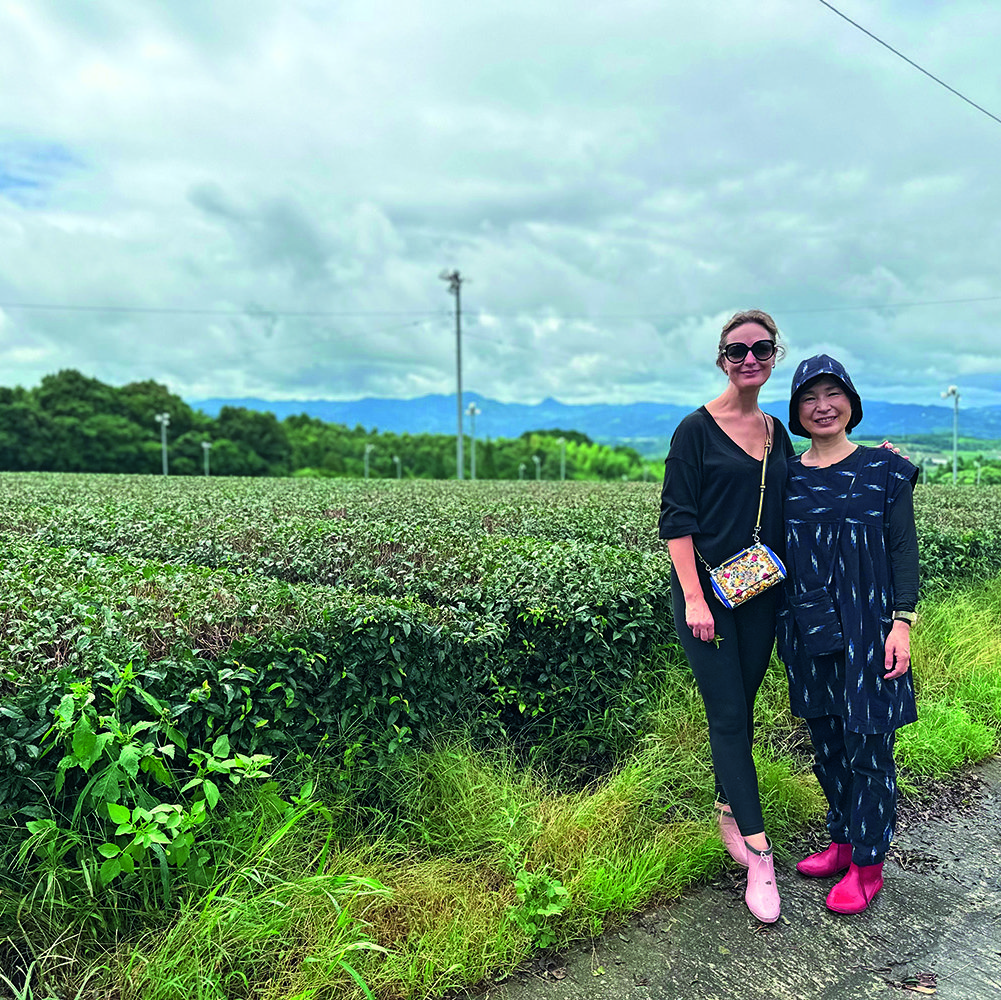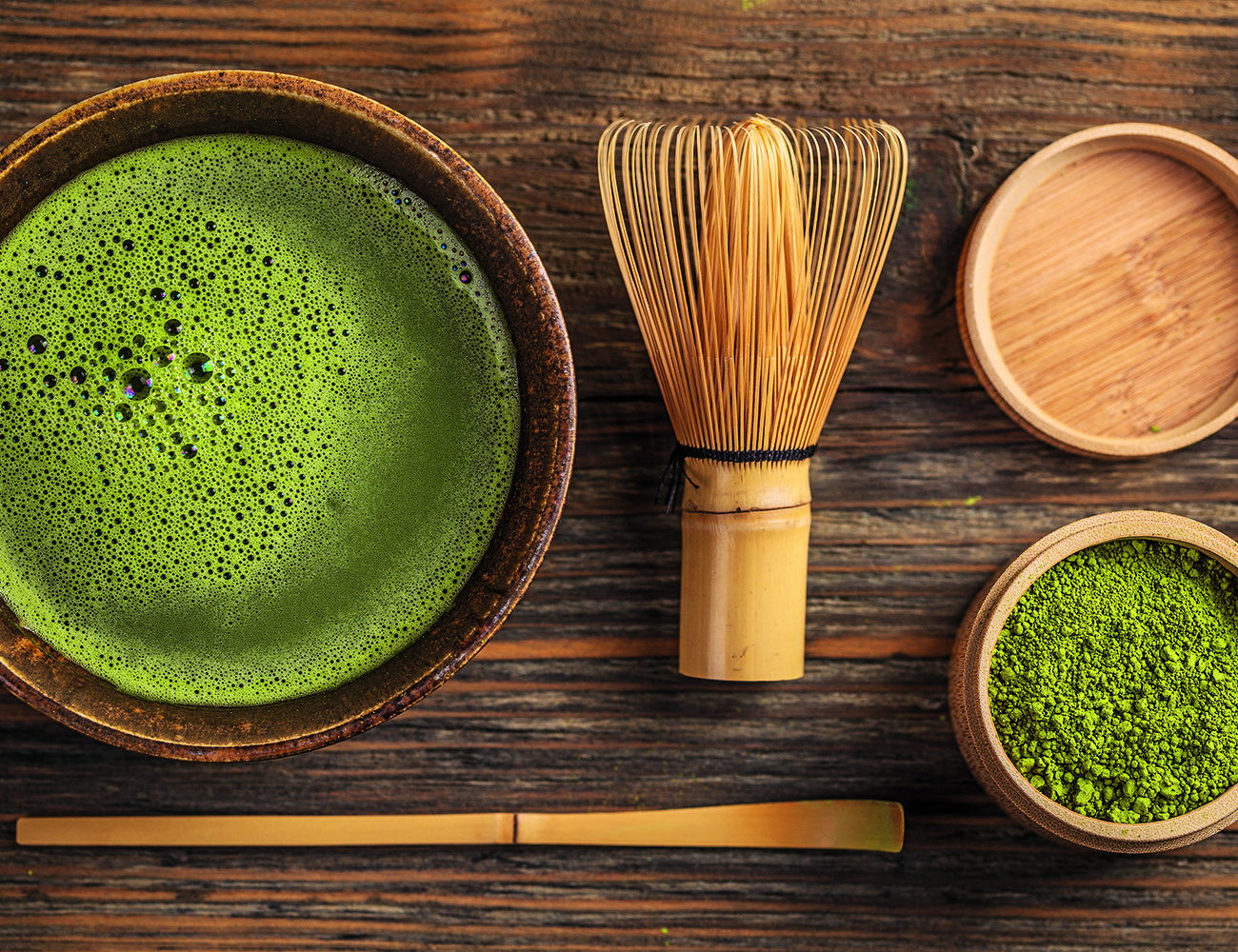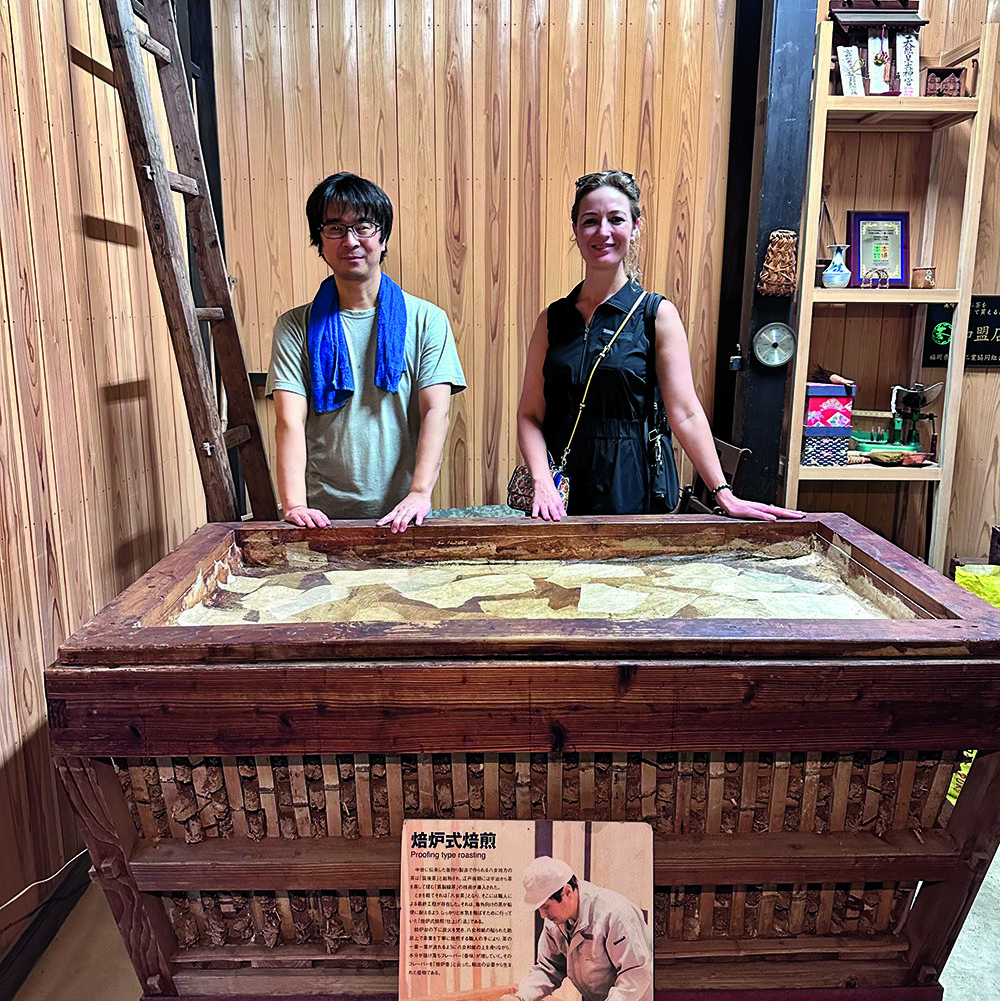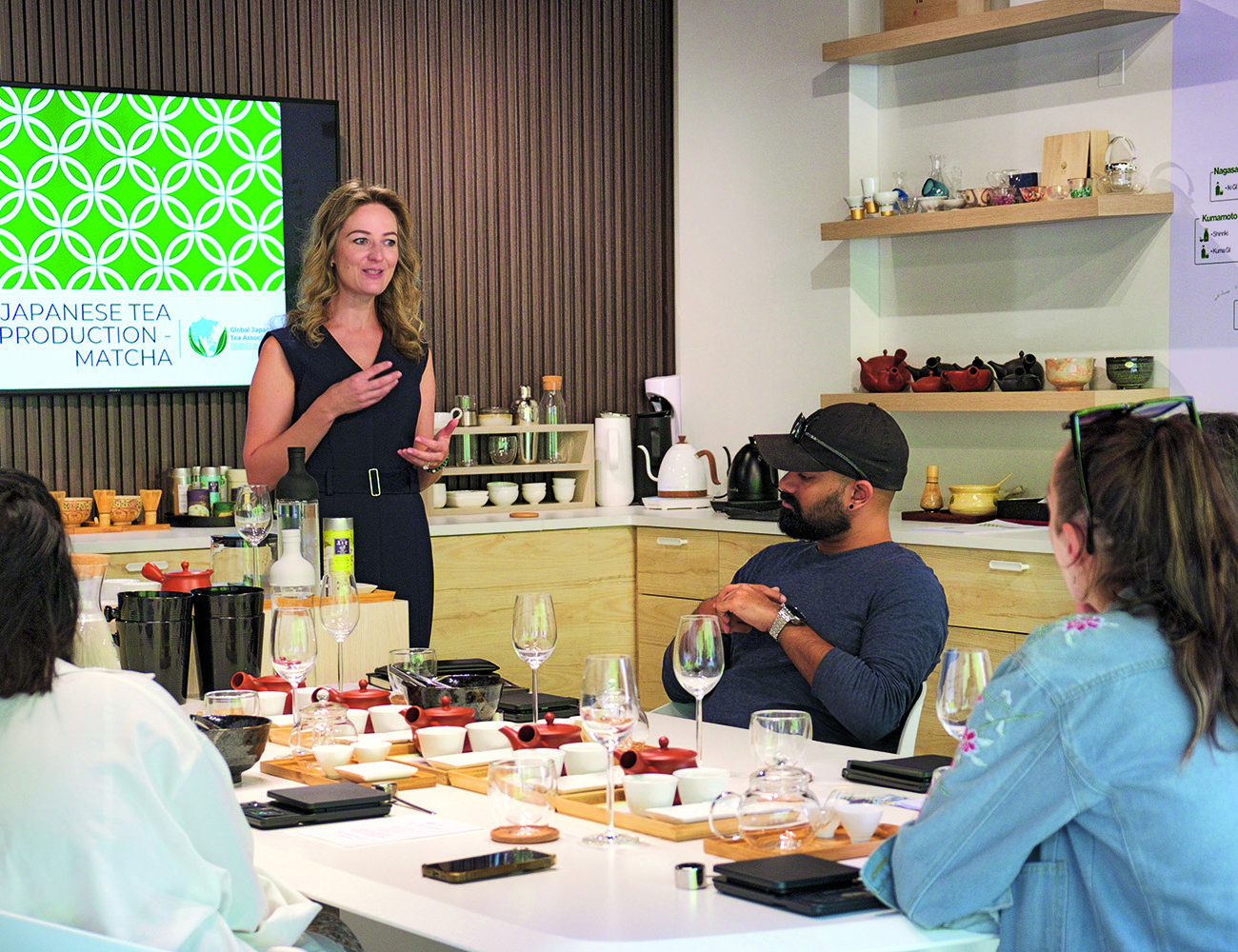In a quiet and unassuming corner of Dubai, Viktoryia Toma – the official representative of the Global Japanese Tea Association in Kyoto, Japan – has embarked on a journey to redefine perceptions of Japanese teas by opening a Japanese tea and food boutique store: Ikigaicha. At this boutique, the island’s diverse tapestry of teas – and corresponding pottery – is meticulously logged, detailed and shared with anyone who wants to explore more.
The venue Viktoryia has chosen in Barsha South is a calm space; the open plan design allows for the browsing of teas, detailed maps and brewing equipment. But it’s the workshops and masterclasses that have also found full favour with tea-curious people. Sharing knowledge about tea is a clear passion for her, and she starts by sharing the diversity of what Japanese varietals can offer.
A conversation sparks over a sparkling tea that blends organic sencha and premium matcha, where the resulting brew is a perfect balance of flavours without additives or excessive sugars. This is a great way, she says, to introduce children to the wonders of the beverage at an early age. “We have hosted some tea masterclasses for kids with sparkling teas and they like to add fruits, for example. I converted my children as well; they now opt for sparkling tea instead of soft drinks.”
The discussion soon shifts to the cultural significance – and the spread – of Japanese teas. “Japanese tea has more than 130 cultivars, which are regionality-specific,” she states. Viktoryia delights in delving into the nuances and distinctiveness of teas from various regions, and adds, “You can definitely appreciate the simplicity of every tea – there are always common traits. But as your tastes unfold, you will find more provocative flavours and a different appreciation.” She likens shopping for tea to shopping for cheeses or olive oils. “You will find that 95 per cent of all teas come from 15 prefectures in Japan, and you’ll see that there is an effect of terroir in tea,” she adds. The Ikigaicha founder stresses on the significance of understanding origin and traceability as much as possible, especially in light of Japan’s efforts to maintain authenticity in a crowded market.

Founder of Ikigaicha, Viktoryia Toma, while on a tour of Japan

Matcha tea
Like many traditional industries, Japan’s tea growing sector faces a certain set of challenges. Viktoryia sheds light on the declining production, aging farmers and the struggle to attract younger generations into tea cultivation. However, with the latter there is a reverse trend in progress. “There’s a new generation of tea farmers who are moving back to the countryside – even those whose families have never been a part of the tea industry. It’s really inspiring for others, and the more they are supported, the more others will do the same,” she says.
So really, it’s not all doom and gloom: Viktoryia highlights the recent surge in global appreciation for Japanese teas, bolstered by celebrity chefs and F&B connoisseurs who incorporate tea rituals into their culinary experiences – including home-grown chefs such as Reif Othman at Tero or Itadaku in Dubai. Viktoryia notes that most restaurants will merely include a token few black and green teas on the menu and stop there. But she says this is changing slowly. “Chef Reif is one of the iconic chefs of the region and he does appreciate tea so at Tero, instead of serving teas in a traditional way, we added the element of sparkling, a cold brew and more. The traditional Japanese restaurant Itadaku has also been serving sparkling tea. Sushisamba also offers a wide selection of authentic Japanese teas. I’m really glad that this trend is being picked up and more chefs – across all nationalities – are starting to use the tea in an elevated way.”

Viktoryia is keen to share the diversity of Japanese teas

Viktoryia hosts workshops at the Ikigaicha Japanese tea & food boutique in Dubai
It’s impossible to have a conversation about Japanese teas without talking about matcha. Producing this tea, as other varieties, involves a meticulous production method right from the start. The tea bushes that will yield matcha need to be shaded (either with traditional bamboo screens or synthetic covers) which helps with stimulating chlorophyll production and enhances amino acid levels, especially L-theanine. This is what creates matcha’s signature umami flavour and vibrant green colour. The leaves are harvested and processed to create ‘tencha’, which are then ground in a labour-intensive process to create matcha.
Viktoryia admits that many people have misconceptions about matcha and associate it with a dusty, grassy or overly bitter taste. She stresses that this can stem from lower quality grade matcha or improper storage, which leads to degradation of taste. “The quality of matcha should be so good that you can use it in tea ceremonies, you can use it either as a thick or thin matcha. You should be able to enjoy the flavours and not feel the chalkiness or bitterness that low-grade quality delivers.”
As Viktoryia wraps up by serving a set of matcha-themed desserts (cheesecake and tiramisu), she smiles and concludes, “It’s all about hospitality; you are taking your omotenashi, which is about bringing the experience to the guests, to the next level.”
DON’T MISS
Follow Viktoriya @ikigaishu and @ikigaicha_by_ikigaishu on Instagram for masterclass and product information.
Listen out for our podcast interview with Viktoriya in January: Nourish by Spinneys.

